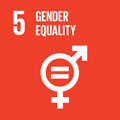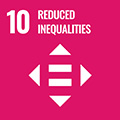- Docente: Roberto Impicciatore
- Credits: 10
- SSD: SECS-S/04
- Language: English
- Teaching Mode: In-person learning (entirely or partially)
- Campus: Bologna
- Corso: Second cycle degree programme (LM) in Statistical Sciences (cod. 9222)
Learning outcomes
By the end of the course, the student develops both awareness of the range issues considered in population studies and specific skills in multivariate regression analysis and life course analysis. In particular, the student will be able: to assess and apply the main demographic measures; to collect data from the major social and demographic surveys at an international level; to apply the appropriate statistical research strategy; to critically evaluate the results of the data analysis by connecting them to a suitable socio-demographic theory; and to deal with selection bias and endogeneity in regression modelling.
Course contents
Course Objectives
The course is an overview of population studies and social demography that, starting from the key concepts of demographic analysis, gradually faces major debates and recent research results. Students should come away with the class with an awareness of the range issues considered in population studies and specific skills in multivariate regression analysis and life course analysis.
In the first part of the course (key concepts in Demography), students will familiarize with basic concepts of demographic methods and measures mainly related to population growth, age and sex distribution, fertility, mortality and migration dynamics. The main population theories are considered as well as a description of the major demographic trends in Italy and Europe.
The second part of the course (regression modelling in socio-demographic analysis) aims at introducing the logic of quantitative analysis in social and demographic research by providing students with skills for multivariate statistical analysis also including multi-process modelling and unobserved heterogeneity components to account for selection bias and endogeneity in regression modelling. The wide availability of data in our societies allows us to analyze several issues related to demographic and social spheres. Thus, the knowledge of statistical analysis and inference is a crucial point.
The third part of the course (life course analysis) introduces quantitative life course analysis. The usefulness of longitudinal data and hazard models for causal analysis in the social sciences is emphasized. Starting from the key concepts of life course approach in the quantitative analysis, basic elements to organize event-oriented data, develop multivariate models and interpreting results are discussed. The course will end with a discussion on possible “holistic” approach to face with life course analysis.
During the course, we will address some key demographic issues such as population aging, low fertility, migration, transition to adult and new patterns family formation. Students are involved in computer programming (using STATA software) for each topic covered in the second and third part of the course. Moreover, the course enables students to structure and conduct autonomously a research project based on the analysis of data sets concerning social sciences.
At the end of the course, the student will be able to:
- assess and apply the main demographic measures and population development indicators.
- collect data from the major demographic and social surveys at international level.
- apply the appropriate statistical research strategy for the analysis of data coming.
- critically evaluate the results of the data analysis by inserting them within a suitable socio-demographic theory.
- check the assumptions on which each analysis depends and make appropriate adjustments or select alternative methods of analysis.
Course contents
1. Key concepts in Demography
What is Social Demography? Population growth. Population momentum. Crude rates. Population equation. Age structure. Age pyramids. Sex structure. Cohort and period measures. Age-specific rates and probabilities. Age standardization. Lexis diagram. Probabilities. Fertility measures. Total Fertility rate. Life tables and life expectancy.
2. Regression modelling in socio-demographic analysis
Data sources for social and demographic research. Micro and macro approach. Causal explanation and multivariate analysis. Spurious effects. Prior and intervening variables. Regression model specification. Linear and logistic regression models. Multi-process modelling and unobserved heterogeneity components. Facing selectivity and endogeneity in regression modelling. The Heckman’s selection model.
3. Life Course Analysis
The powerful of longitudinal data. Causal modelling and observation plans. The relevance of the past. Data for the life course analysis. Computer programs for life course analysis.
Event history data structures. Key concepts and basic terminology. Censoring and truncation.
Nonparametric survival analysis. Life table method. Survival curves. Kaplan-Meier estimator.
Exponential hazard model. Piecewise constant exponential models. Time fixed and time-varying variables. Restructuring data for the time-varying covariates. The episode splitting. Going beyond the basic approach: developments in the EHA and other life course analysis.
A “holistic” perspective: the sequence analysis. Dissimilarity matrix and cluster analysis applied to sequences.
4. Key issues
World population growth. Demographic transition. Population ageing. Global international migration. Migrants and the labour market. Marital disruption. Education and fertility. Transition to adulthood in Western countries. Gender system. Second demographic transition. Low fertility and education. Patterns of cohabitation in Europe. Geographical mobility and social stratification in Italy.
Readings/Bibliography
- Lesson notes, selected papers, exercises, datasets and documents (available on the Virtuale [https://virtuale.unibo.it/] platform ).
- Mills M. (2011), Introducing Survival and Event History Analysis, Sage.
- PRB's Population Handbook (6th edition, 2011). Free download at
http://www.prb.org/pdf11/prb-population-handbook-2011.pdf
Optional readings
- J. Weeks Population: an introduction to concepts and issues. Cengage Learning.
- Blossfeld H-P., Golsch K., Rohwer G. (2007) Event history analysis with Stata. Mahwah (NJ): Erlbaum (chapters 1-6)
- Rowland D. T. (2003), Demographic methods and concepts, Oxford University Press (ch. 1, 2,3,4,6,7)
Teaching methods
Class activities (60 h) includes lectures, activities on data manipulation, exercises, practices on method and models in Social Demography, presentation and discussion of research report developed by students.
Attendance is strongly recommended to successfully complete this course.
Assessment methods
Requirements
Students should be familiar with basic knowledge in the field of statistics and computer science. A basic knowledge of STATA is suggested.
Students are required to develop a research project based on real data.
Assessment method (for attending students)
- Midterm exam (5 pt): written test including some exercises on key concepts in demography
- Research paper (10 pt): developed by small groups (2/3 students) and presented at the end of the course
- EHA computer exercise (5 pt): to be made in the computer lab at the end of the course (see Calendar)
- Final discussion (10 pt): oral discussion on the whole program and activities.
Please note that the points acquired remain valid until the end of September. Exams and activities are not compulsory. However, the sum must be at least 18 in order to pass the exam.
Assessment method (for non-attending students)
Oral exam (20 pt) + Research paper (10 pt). The research paper must be made individually.
Teaching tools
Online material (slides, papers, exercises, datasets, etc.).
Use of computing equipment for statistical analysis (STATA software). Authorised students can download the software and the related licence here [https://www.unibo.it/secure/software-stata/] .
Office hours
See the website of Roberto Impicciatore
SDGs




This teaching activity contributes to the achievement of the Sustainable Development Goals of the UN 2030 Agenda.
